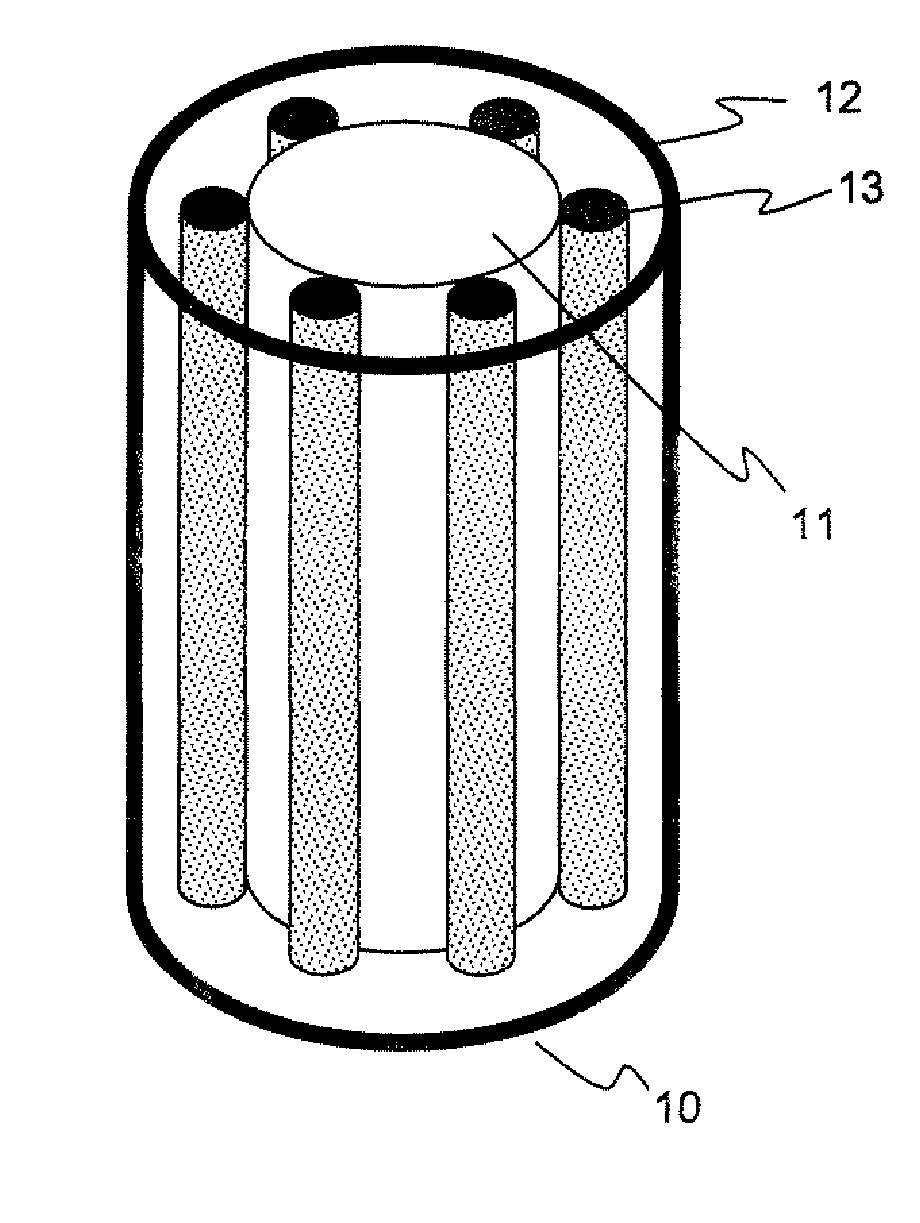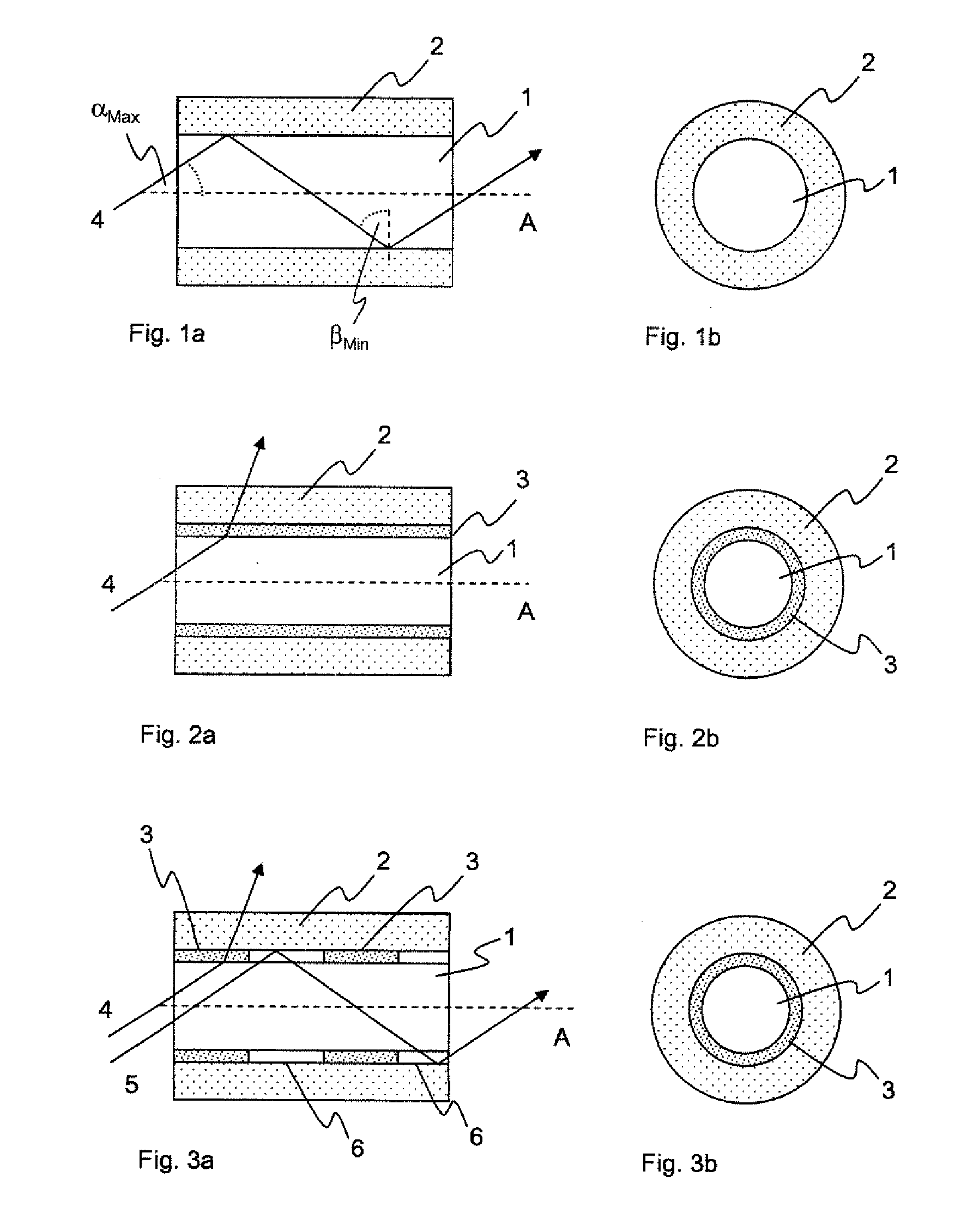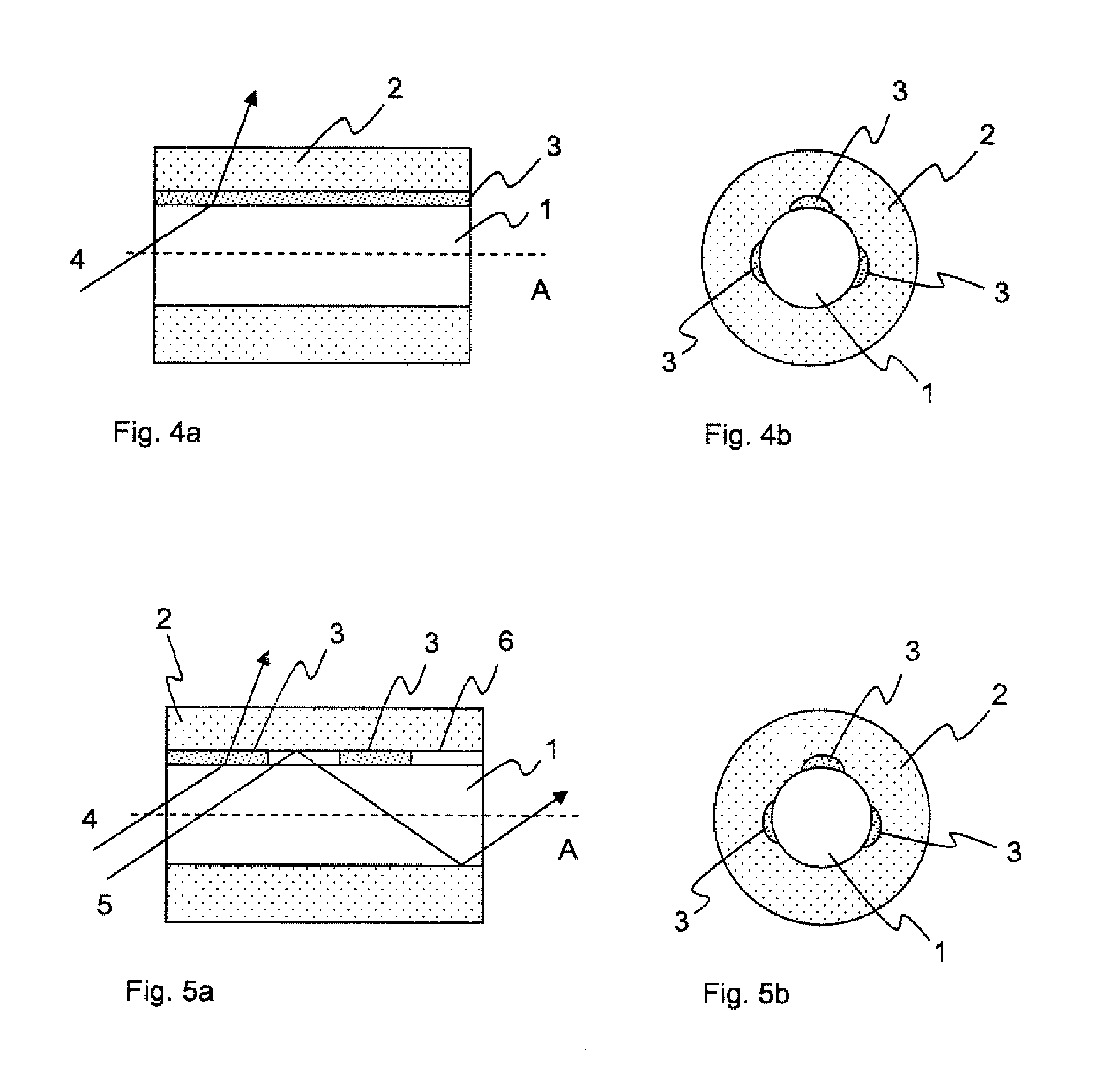Side-emitting step index fiber
a fiber and step index technology, applied in the direction of fiber light guides, instruments, manufacturing tools, etc., can solve the problems of difficult to produce appropriate preforms, complex use of core geometries disclosed in jp 9258028 a2, and inefficient light coupling, etc., to achieve easy scalable, economic production, and not flammable
- Summary
- Abstract
- Description
- Claims
- Application Information
AI Technical Summary
Benefits of technology
Problems solved by technology
Method used
Image
Examples
Embodiment Construction
[0144]All the drawings are schematic, the diameters of their elements are not to scale, and also the relative ratios of dimensions of all the elements to one another can deviate from the drawings in the real objects.
[0145]FIG. 1a shows the longitudinal section along the fiber axis (A) of a step index fiber from the prior art. This step index fiber consists of a core (1) having the refractive index n1. The entire periphery of said core is surrounded by the cladding (2), which has the refractive index n2. Incident light (4) is guided in the core (1) because total reflection occurs at the cladding (2) by virtue of the smaller refractive index n2. However, the condition of total reflection is possible only up to a limiting angle of the light striking the cladding, which angle depends on the values of the refractive indices of core and cladding. The limiting angle βMin can be calculated by sin(βMin)=n2 / n1, βMin being measured from a plane perpendicular to the fiber axis.
[0146]The refract...
PUM
| Property | Measurement | Unit |
|---|---|---|
| Diameter | aaaaa | aaaaa |
| Angle | aaaaa | aaaaa |
| Angle | aaaaa | aaaaa |
Abstract
Description
Claims
Application Information
 Login to View More
Login to View More - R&D
- Intellectual Property
- Life Sciences
- Materials
- Tech Scout
- Unparalleled Data Quality
- Higher Quality Content
- 60% Fewer Hallucinations
Browse by: Latest US Patents, China's latest patents, Technical Efficacy Thesaurus, Application Domain, Technology Topic, Popular Technical Reports.
© 2025 PatSnap. All rights reserved.Legal|Privacy policy|Modern Slavery Act Transparency Statement|Sitemap|About US| Contact US: help@patsnap.com



